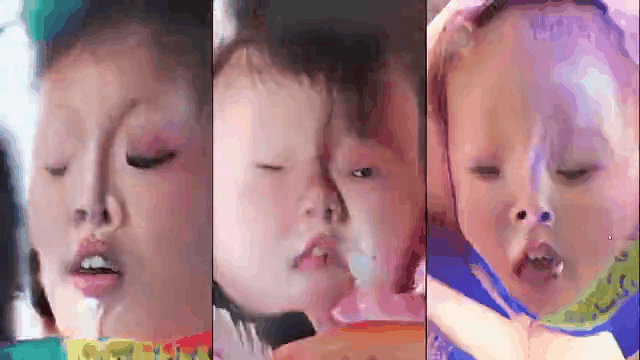
Following up on the theme of discorrelation, one's mind naturally wanders toward the astounding sorts of images created in recent years by AI and machine learning algorithms. The images created by Google's DeepDream are particularly weird and intoxicating, as is the video work of Mario Klingemann.
Some of the best work I've seen using machine learning was Trevor Paglen's 2017 show "A Study of Invisible Images" at Metro Pictures. You might know the work already because Hito Steyerl used one of Paglen's images on the cover of her last book, Duty Free Art. Of particular interest was a series of images under the heading "Adversarially Evolved Hallucination." For these images, Paglen trained an algorithm on a specific data set, then deliberately warped the outcome by directing the machine to generate a different kind of picture. A vampire with a melting face, a ghostly octopus -- the result is a seductive mash up of Salvador Dalí and Francis Bacon.
While Google's DeepDream images are often fascinating, even sublime, they tend aesthetically toward the surreal or the psychedelic rather than the discorrelated. To be sure, these images are in fact highly correlated in the strict technical sense, as they are the product of correlated image databases. Large numbers of images are correlated together into training sets based on keywords, metadata, and other techniques. The algorithm learns from this training data, essentially learning a specific method of correlation. In other words, while these sorts of images can be uncanny or grotesque, they are at the same time highly correlated images. Correlation is baked in to the technology.
Such is the strange paradox of our times: superlative deterritorialization and maximum plasticity, fused with a form of computer-generated correlationism in high dimensions. In order to discorrelate these images, one would need to eliminate the training set altogether, and/or introduce wide disparities between the training sets and algorithm used to build the image (following Paglen's example).

What this means for cinema I'm not entirely sure. Temporal montage has suffered so much in recent years, whether in the hyperactive style of Michael Bay, or the opposite tendency, the endless long takes and "single shot" movies. GAN cinema will also hasten the move away from temporal montage, as with Klingemann's films that replace montage with animation. Meanwhile, the computer has killed montage as well, or I should say morphed montage from being a question of time to being a question of space. Operating systems make far fewer temporal cuts than their cinematic forebears. Less concerned with temporality, the computer slices the field spatially into windows, and frames, and cells within cells.
No doubt one of the hustler auteurs -- Lars von Trier or Gaspar Noé or Nicolas Winding Refn -- is angling to work this sort of animation into an upcoming feature, or, for that matter, Steven Soderbergh or Jia Zhangke or the Wachowskis. So get ready for GAN cinema. It's right around the corner.